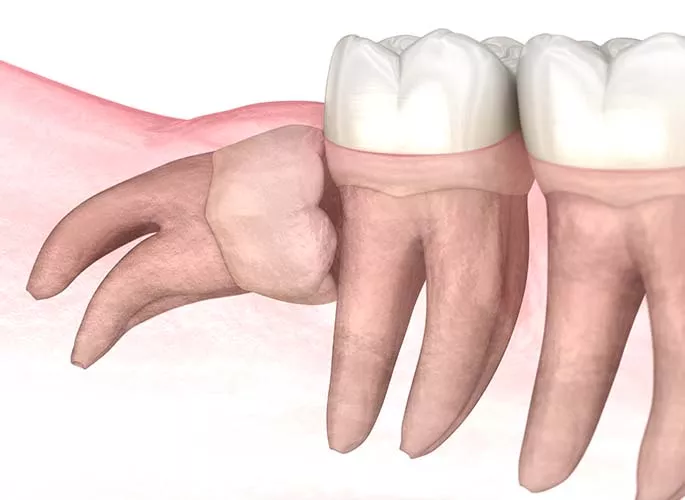Wisdom Teeth Assessment and Extraction
Your wisdom teeth are your last set of adult teeth. Sometimes there isn't room for these large molars to grow, so they need to be removed before they can damage your other teeth.

What Are My Wisdom Teeth and Why Do They Need to Be Removed?
Wisdom teeth are large molars that grow at the back of your jaws. Humans have evolved to have smaller jaws, which means there isn't always room in your mouth for wisdom teeth to grow. If your dentist doesn't remove your wisdom teeth, they can damage your other teeth, or they can become crooked and hurt the inside of your mouth.
Book NowHow Does My Dentist Remove My Wisdom Teeth?
Because your wisdom teeth are usually removed before they emerge from your gums, your dentist needs to remove them surgically. That means your dentist makes incisions in your gums and removes the wisdom teeth through them. Your dentist will use a local anesthetic (freezing) and give you a sedative to help you stay calm during the operation. After your wisdom teeth are removed, your dentist will use sutures to close the incisions.
Video: Extraction
Frequently Asked Questions
What are dry sockets? How do I know if I develop them?
When a tooth is removed, a blood clot usually forms in the socket left by the tooth. The blood clot covers and protects the bone and nerves in the socket. If the blood clot doesn’t form, the bone and nerves will be exposed, which can be very painful. Talk to your dentist if you feel a bad toothache after your wisdom teeth are removed.
Is it possible that my wisdom teeth don’t need to be removed?
Yes. If your wisdom teeth are growing correctly and there is room to emerge normally, your dentist won’t need to extract them.
Why are they called Wisdom Teeth?
They’re called wisdom teeth because they usually emerge when you are a young adult and (hopefully) wiser.
